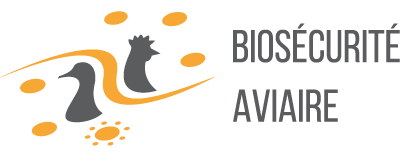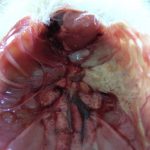Avian botulism is a toxin-infection that is considered rare in poultry farming but has not disappeared. In 2007, for an unexplained reason, the prevalence of the disease increased and has remained stable since then. Beyond the detection and management of outbreaks observed in the field, the question of human health risk assessment arises. This dossier is built around the questions raised by avian botulism.
Botulism is an animal and human disease characterized by nerve damage, caused by the action of a toxin produced by a bacterium, Clostridium botulinum. This nerve damage results in a variety of clinical signs, all associated with paralysis of locomotor, respiratory or visceral muscles. In humans, botulism is essentially linked to the consumption of poorly prepared or altered preserves. In animals, the consumption of decomposed corpses is the major source of contamination.
The disease agent and its pathogenicity
Botulism results from the action of a neurotoxin produced by the bacterium Clostridium botulinum. Clostridia are bacteria, Gram-positive bacilli, strict anaerobes and sporulated, present in the environment where they can survive for a very long time. They are ubiquitous bacteria, widely distributed in soil and water.
There are several types of neurotoxins, referred to as A, B, C, D, E, F, E and G. They are synthesized during the exponential growth phase of the bacterium, in the form of a protein chain, and then activated. Neurotoxins ingested or produced in the digestive tract cross the intestinal barrier, pass into the bloodstream and reach the neurons. Unlike the spores of other clostridia, toxins are heat-sensitive and are also sensitive to chemical agents
Birds are sensitive to toxins of type A, B, C, C, E (in piscivorous birds) and a chimera type C/D, with a predominance of type C and C/D. Human botulism is due to toxins A, B (the vast majority), E and F.
Impacts on public health
Most reported cases of avian botulism are caused by C or C/D type toxins, safe for humans.
Unfortunately, in recent years, there has been an emergence of type E avian botulism, which has only been observed in Gallus so far and could contaminate humans.
The outbreaks of human botulism documented in recent years are very few (15 to 20 per year) and are associated with the consumption of domestic canned food (deli meats, vegetables), fermented fish, honey contaminated with spores (risk taken into account for infants), or even…cocaine contaminated with spores !
No cases of human botulism have been associated with the consumption of poultry products.
Nowadays, while the risk of transmission of botulism from poultry to humans must be taken into account in principle, in the light of current epidemiological data, it is extremely low or even non-existent.
Epidemiological data
All bird species, regardless of their breeding conditions, health status and performance level, can be affected by botulism. The most affected breed species are duck, broiler chicken, turkey, pheasant and ostrich. Most cases are described in spring and summer.
Avian botulism is mainly due to toxi-infections by ingestion of C. botulinum spores, rather than intoxinations. During toxi-infections, poultry become contaminated by the ingestion of bacterial spores of the environment and faeces. Under normal conditions, ingested spores do not develop or only slightly in the digestive tract. Their massive development and the secretion of botulinum toxins only occur when the digestive flora is disturbed. During persistent contamination a large amount of toxin can be produced and healthy animals can be affected.
The spores and neurotoxins contaminating poultry come from different sources. The most frequent source would be contaminated food. Contaminated poultry corpses are a good development environment for C. botulinum (ingestion of insects growing on these corpses, cannibalism…). Mammals entering farms are often carriers and their bodies are contaminated. Wild birds that are carriers can be the cause of contamination in outdoor poultry. The environment is a source of contamination because C. botulinum is widespread in soil and water (hydrotelluric germ).
The incubation period is variable and depends on the amount of spores ingested and the amount of toxins produced. It can vary from a few hours to about ten days.
Clinical manifestations of the disease
Mortality and morbidity vary according to the amount of toxin ingested; mortality in an affected group can be as high as 40% or even 100% in turkeys, rare cases of cure exist.
For all species, symptoms correspond to ascending flaccid paralysis, beginning with the legs and progressing to the wings, neck and eyelids. The neck becomes soft, the head and beak resting on the bedding, the eyelids are drooping. Birds generally exhibit comatose behaviour. Bilateral paralysis of the legs leads to incoordination, ataxia or lameness. Affected animals rest in sternal decubitus and refuse to move. They may show signs of chills, dishevelled plumage, breathing difficulties, and often diarrhea with urate excess in the droppings. A dirty beak may also be observed, related to regurgitation of saliva, mucus or food, probably due to altered swallowing reflexes and digestive peristalsis.
Death occurs by asphyxia, due to paralysis of the abdominal and cardiac muscles, after 1 to 8 days. In most cases, no lesions are visible at autopsy or histology.
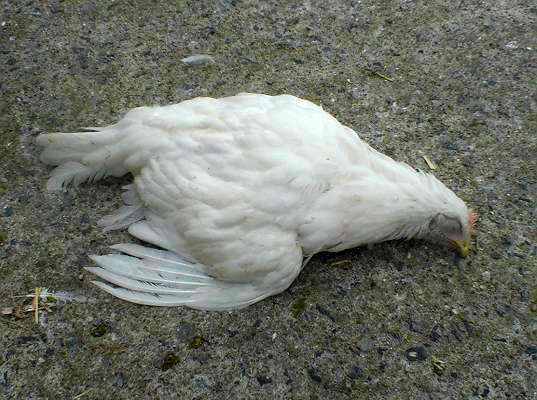
The diagnosis
Epidemio-clinical diagnosis
Suspicion is based on the observation of clinical signs (flaccid paralysis, mortality) without particular lesion. A previous episode of botulism in the farm, poor hygiene monitoring, poor management of corpses, proximity to a water body frequented by the avifauna can support suspicion.
Laboratory diagnosis
Confirmation is based on the detection of the neurotoxin in the serum of sick birds by a mouse lethality test. The detection of C. botulinum should not be done on dead animals because this bacterium develops very quickly on corpses. Typing is also carried out in vivo, by seroprotection using neutralizing sera, specific to each type of botulinum toxin (protected mouse test). Detection of the toxin by “endopeptidic” mass spectrometry is another alternative method to the lethality test on mice.
Differential diagnosis
Lead poisoning, ionophore poisoning, alpha-chlororalose poisoning, vitamin E deficiency (encephalomalacia), Newcastle disease, Avian influenza, Marek’s disease (paralysis), avian encephalomyelitis (nervous signs but often in hyperactivity), C.perfringens clostridiosis, erysipela, acute pasteurellosis (but often clear bleeding lesions), or appendicular skeleton problems.
The bacterium can also be detected in the intestinal contents of sick birds either by culture or by using gene amplification methods (PCR).
Disease prevention and control
Action to be taken in case of a suspicion in poultry farming, some measures must be implemented to limit the spread of the disease
- Isolation of affected groups and elimination of animals with paralysis
- Antibiotic treatment : β-lactamines are the molecules of choice
- Strict disposal of corpses (beware of maggots that contain large quantities of toxin)
- Treatment or change of bedding, to limit the risk of recontamination : manure should preferably be incinerated, when possible, or treated with calcium hypochlorite or formalin.
In case of confirmation of the diagnosis, the control strategy will be adapted to the context : total slaughter or sorting and treatment of animals in combination with sanitary measures, change of bedding, soil disinfection near the building, etc…
Prevention
Medical prophylaxis is based on vaccination, based on specific toxoids of C. botulinum type C and D. These vaccines do not have MA in poultry farming in the European Union.
Hygienic prophylactic measures mainly concern the management of corpses on farms, with more frequent collection. General hygiene measures (rodent control, cleaning and disinfection,…) contribute to prevention.
Care must also be taken not to spread botulism to neighbouring farms : manure management is essential.
Regulatory framework in France
Since the decree of February 17, 2006, avian botulism has been considered as a contagious animal disease (“MARC : Maladies Animales Considérées Contagieuses” in French), giving rise to animal health measures.
NB : In cattle and wild birds, it is a reportable disease (“MADO : Maladie A Déclaration Obligatoire” in French).
The main consequence of the declaration of an outbreak of avian botulism is the obligation to respect a 15-day period between the end of symptoms and the slaughter of poultry: this is intended to avoid bringing animals possibly contaminated with botulinum toxin into the food chain. This period is based more on the application of the precautionary principle than on scientific basics.
The application of strict biosecurity measures, in order to decontaminate the site, is also prescribed.
